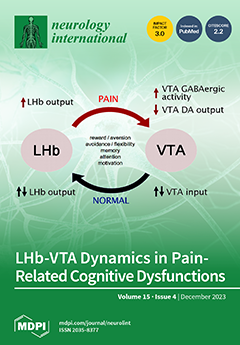In this study, the relationship between the duration of physical rehabilitation and occurrence of pneumonia after ischemic stroke was examined. We included 426,508 patients aged
75 years with acute ischemic stroke. A multilevel logistic regression analysis nested at the hospital level was
[...] Read more.
In this study, the relationship between the duration of physical rehabilitation and occurrence of pneumonia after ischemic stroke was examined. We included 426,508 patients aged
75 years with acute ischemic stroke. A multilevel logistic regression analysis nested at the hospital level was conducted to examine the association between the duration of physical rehabilitation and occurrence of pneumonia. The duration of physical rehabilitation refers to the hours of physical rehabilitation performed daily until the 7th day of hospitalization. In the multivariable analysis, the intensity of rehabilitation for durations of 20–39 min/day (adjusted odds ratio [aOR]: 0.78, 95% Confidence Interval [CI]: 0.75–0.81,
p < 0.001), 40–59 min/day (aOR: 0.68, 95% CI: 0.66–0.71,
p < 0.001), 60–79 min/day (aOR:0.56, 95% CI: 0.53–0.58,
p < 0.001), and
80 min/day (aOR: 0.46, 95% CI: 0.44–0.48,
p < 0.001) were significantly associated with a reduced incidence of pneumonia. In addition, the trend identified for duration of rehabilitation was significant (
p < 0.001). The results of this study suggest the usefulness of high-duration physical rehabilitation for preventing pneumonia in older patients with ischemic stroke.
Full article






